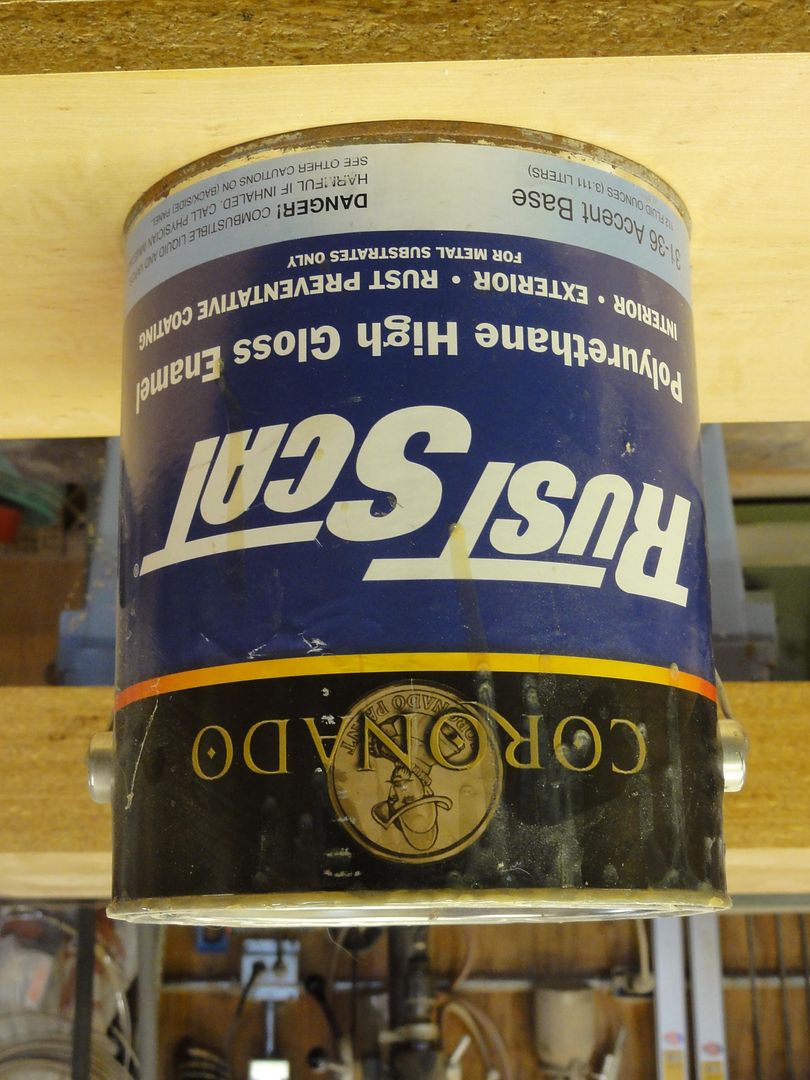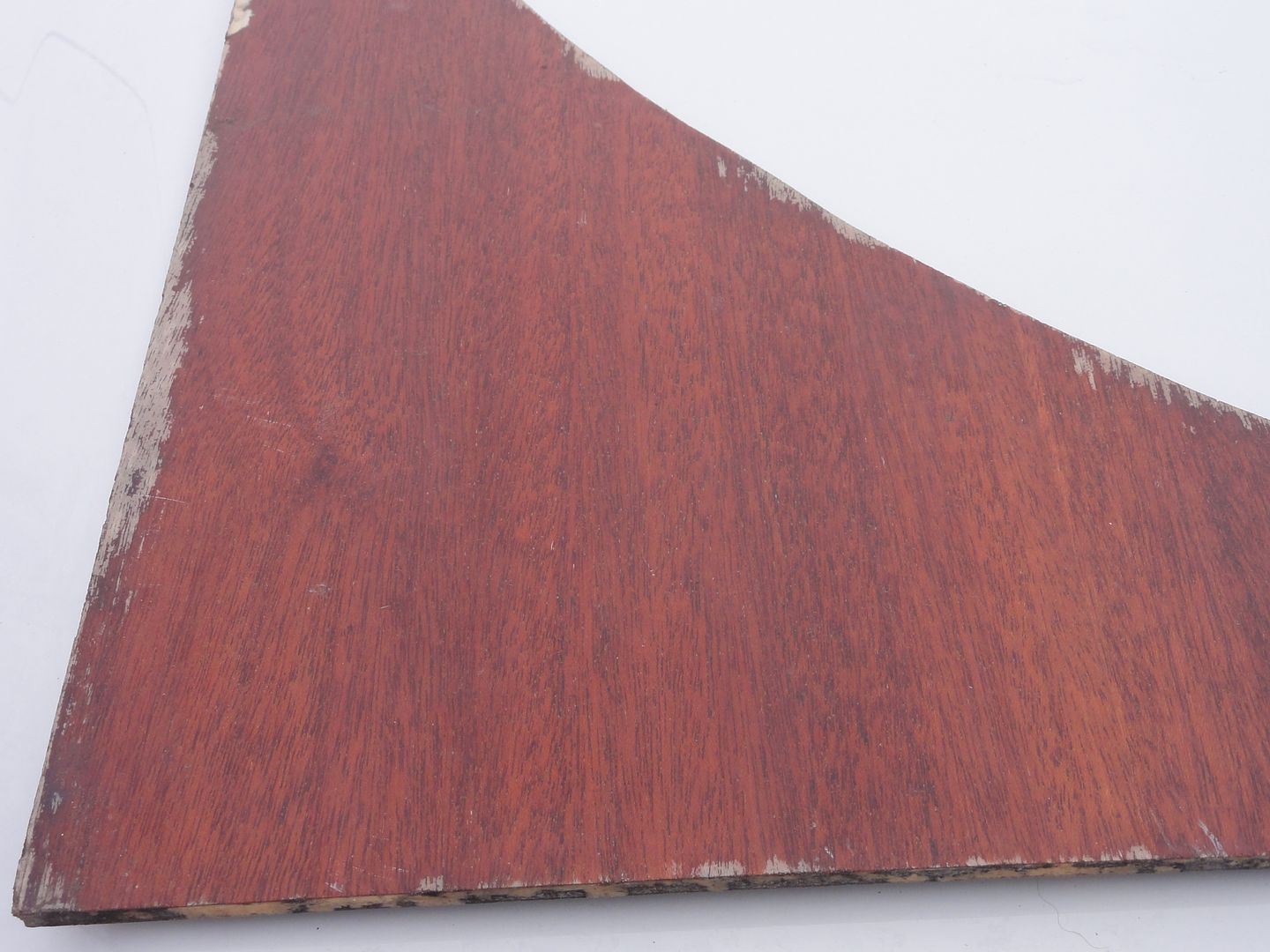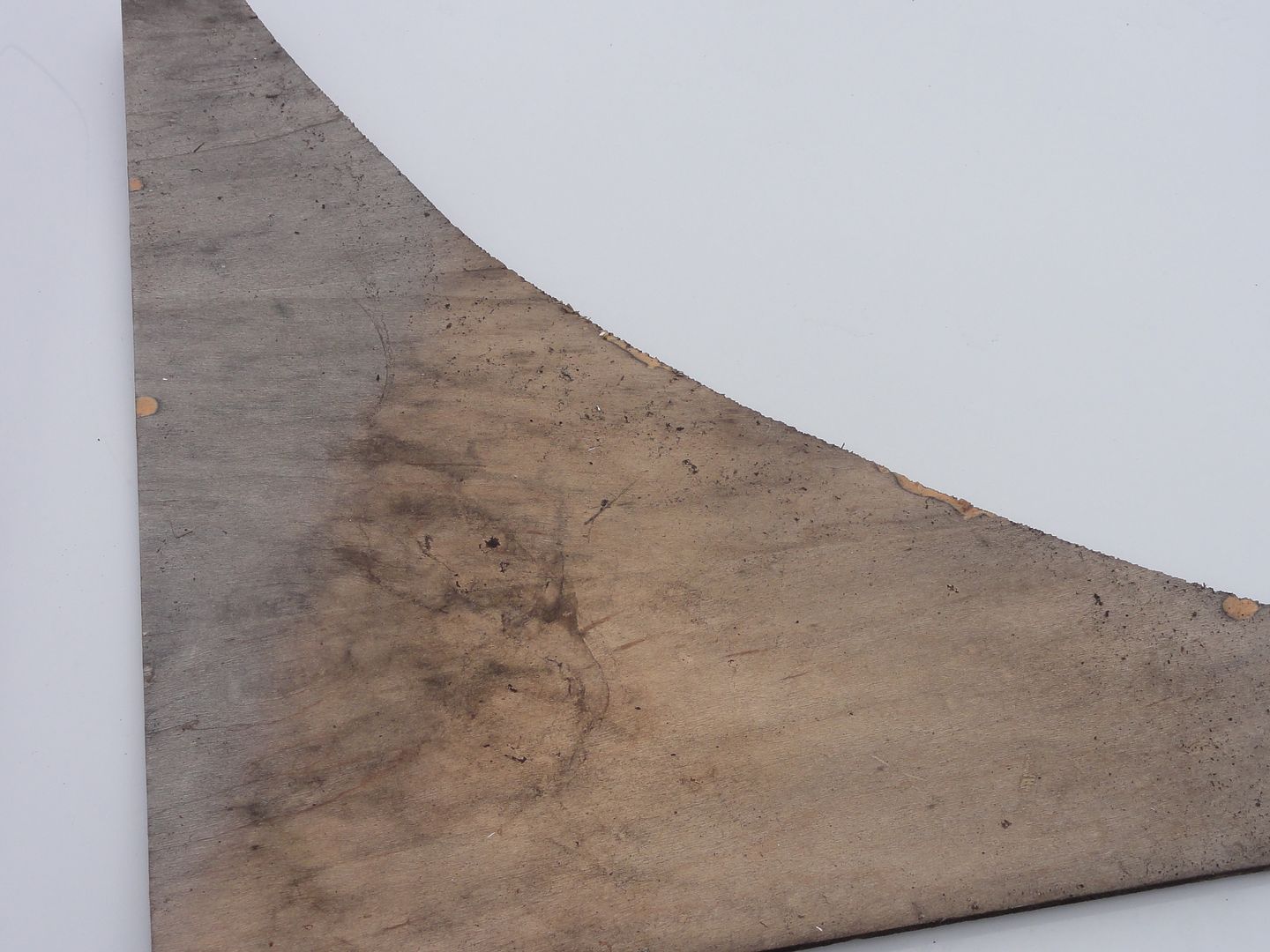Unfortunately, the author of the article closed his store and going on hiatus.
Here's most, if not all of that article, http://community.woodmagazine.com/t5/St ... /ba-p/1657
Which I'll cut and paste in case that goes dead someday:
With the recent change over from the old forum format and the loss of the ability to search for old threads I decided it was time to put Jim's article about his experiment with oil-based paint bases where it could be referenced and read with ease. Over the years since Jim's post originally appeared, I have regularly recommended his "clear paint", and I have frequently used it myself. I use it and I recommend it to others because it works; protests from diehard adherents to the use of expensive marine spar varnish notwithstanding.
Here then is Jim Kull's original post edited only slightly for clarity, authored by Steve Mickley:
In a recent post my friend, Steve (Mickley), made reference to my tests of doggie sprinkling on exterior finishes. I figure after almost a year of testing it is time to post some interesting discoveries.
As a preface, allow me to set the stage. Almost daily there is a posting about clear, exterior finishes for doors, chairs, signs and such. Responses run the gamut from diehard marine finishes to apply a coat of primer and then paint. Each of these has a bit of a problem. Marine finishes are not always the easiest to find, and it grieves me to think of a lovely oak, teak, mahogany, fir, redwood or similar nice wood door painted in mauve goop.
Bob from Fl inspired me with his continuing and accurate statements about the failings of a clear coat and the advantages of a good quality exterior paint. I decided after lots of reflection that he really was right but there was always the picture of mauve in my mind. So........., how could one take advantage of his advice and yet capitalize on the beauty of a nice wood.
I began to reflect on the characteristics of paint. Now comes the boredom...
There were several things I knew about paint:
Exterior paints contain a mildewcide and a fungicide that a (marine) varnish does not.
The best quality paints will contain a UV (inhibitor) and trans-oxide pigments in very high percentages.
Almost all paint is custom mixed by the store. The retailer maintains a large supply of base products that are used to achieve the desired color.
There are generally 4 base products and the specific one for your paint is determined by your color choice. These base products are either named or numbered. They are named pastel, deep, tint and neutral. If numbered it is cleverly 1, 2, 3 and 4 with the exception of Olympic who numbers 1, 2, 3 and 5. Olympic is unaware that "4" comes before "5". Pastel and/or 1 is virtually a pure white and used for the lightest of colors. The others are slightly color altered from white and more translucent than pastel. These are used for succeeding deeper colors. All of this comes to neutral, 4 and/or 5. These are clear and used for (mixing) the darkest colors. In the can they are somewhat opaque but dry more or less clear.
Now comes the testing. I bought 4 oak exterior doors. Each door was given one coat of the same MinWax Stain. On 3 of the doors, I applied 2 coats of "base" to the 6 sides of each door (3 coats on the top and bottom edges). Each of these three doors had a different type of exterior neutral, 4 or 5 base. The fourth door was finished with a consumer "spar" varnish from my local friendly paint/hardware store. The bases for the 3 painted doors were an exterior semi-gloss acrylic, an exterior semi-gloss oil-based polyurethane floor paint, and a semi-gloss oil-based trim and siding paint.
The doors were set up, slightly inclined, in mostly direct sunlight under a pecan tree in the backyard. (My wife just loved that one.) Daily, the sprinklers managed to hit the doors. The birds in the pecan tree used the doors for target practice. And, yes, the dogs did anoint the doors on a regular basis. My blonde Cocker, Zazu, was particularly enamored with the doors. Over the course of the test the doors experienced lots of Texas sunlight, rain and snow. The temperature went from below freezing to over 100. The advantage to the inclined position of the doors was the snow, ice, water from the sprinklers and the rain tended to collect in the raised panel areas. I feel these doors were subjected to far more severe environmental conditions than would be expected from normal use.
The results were interesting. The "spar" varnish (initially) looked fabulous; but, after about 2 weeks it began to develop small cracks. In rapid order the door began to turn black, started to mold and the smell was enough to knock a buzzard off of a manure wagon. The water-based acrylic is milky in the can like a water-based poly. It dried to a more or less water clear surface but was a bit cloudy. It tended to wash out the stain a bit. Over time it became cloudier and ultimately become almost white. But, it remained solid and protected the wood. The oil-based bases are also a bit opaque in the can but dried to a clear finish that is almost identical to a spar varnish - they added an amber tone to the doors. Both the oil-based poly floor paint and the oil-based trim and siding paint remained "clear" over the entire test period.
The testing came to an end with a bit of encouragement. My wife said something clever like,"Get those damned doors out of the backyard!" She does not understand science. The floor poly had some minor checking and a thinned coat of the same base over the surface made that disappear. The door with the oil-based trim and siding paint was perfect, other than it had lost a bit of the gloss.
So, I am with Bob - paint the door. My preference is the oil-based products. If you are predisposed to a water-based use an acrylic rather than latex.
One thing you will find when you go out shopping for your product is a lack of knowledge on the part of the salesperson. Not many of these folk are aware that their neutral or 4 base will dry clear. If you want to have some fun, spring it on them. They will suggest you are full of Donkey Dust. Ask them to shake a can and put some on a stir stick. Dry it and voila, it is clear.
Jim Kull
Now, permit me to offer a few concluding thoughts, if I may.
We woodworkers (especially when it comes to finishing) are creatures of habit; we do things the way we do them because that's the way we have always done them. From time to time it's good to step back and examine old "truths" just to see if they really are true. The use of expensive marine varnish in non-marine exterior applications is one of those "truths" that has long need to be revisited. That is precisely what Jim Kull has done. Permit me to give you a glimpse of the thinking that went into Jim's examination of paint base as an exterior finish option.
When Jim submitted his findings we regularly got questions on the WOOD Magazine Finishing & Refinishing Forum asking the best way to finish doors, especially those exposed to the weather and subject to high UV. The options then were Helmsman Spar Urethane (and its various look-alike polyurethane pretenders), expensive marine varnish, and exterior paint. Nothing has changes except that, thankfully, more and more woodworkers today understand just how poorly Helmsman Spar Urethane and its market share grabbing look-alike products perform, especially when exposed to full (or even partial) sun. These polyurethane based products fail quickly in a UV rich environment; often peeling like a bad sunburn before the end of even a single season.
Marine varnish, then as now, was the recommendation of choice for a number of contributors. There is no arguing that quality marine varnishes will outperform polyurethane "spar varnishes" if UV resistance is the only objective. But, good marine varnish is very expensive; and, in reality it offers no reprieve from regular, on-going maintenance. You must still tend to the finish every year in full-sun environments; you must inspect, sand damaged areas, and recoat. Further, even those who regularly recommend marine varnish products will tell you that a minimum of 5 or 6 coats is required to obtain the full benefit of the UV blocking properties of these finishes. So, not only are you applying two to three times more varnish; you are applying a product that costs two to three times more, and your maintenance schedule is still the same.
You are also applying a "long-oil" varnish that is softer and much less resistant to moisture in the form of water-vapor than regular or "short-oil" varnish. Moisture movement into and out of the wood with seasonal changes in relative humidity is every bit of destructive to joinery as UV is to wood. These quality marine varnishes are excellent finishes in their intended environment-if I owned a wooden boat I would use nothing else. But, we are not focused on maintaining a boat; our objective is to apply a durable finish to a front door, and to use a finish that will offer maximum protection along with minimum maintenance. Quality oil-based exterior paint, sans the pigment, is ideally suited to this application. Exterior oil-based paint, after all, is little more than exterior oil-based varnish with a lot of pigment added. Remove the pigment and you have, as Jim explained, a very durable exterior varnish with additives that benefit the finish on your front door. These additives would be useless in a marine environment; but, we aren't talking about a marine environment, are we.
One final admonition; if you decide to try the paint solution you must understand that you are applying it like varnish, not like paint. Use a good brush, keep your coats thin, and brush the paint-base out into a thin, uniform film. If you apply the paint-base too heavily you will get a cloudy finish.
Clear exterior finish option.
29 posts
• Page 2 of 2 • 1, 2
Re: Clear exterior finish option.
I used the exterior poly urethane base on my build. It has been in use for over 2 years with about 100 days out in the weather. The trailer has close to 10,000 miles on it.
I did post my thoughts on this earlier in the year, but can't find my post.
This is what I used...it was about 28 bucks for a gallon..

Here is a sample cutoff that only has finish on 1 side. It was left out in the weather for 1 full year. It was rained on and buried in the snow for a few months. Sun the rest of the time.

Backside of the 1/4" sample...

This is the end result...

Some of my thoughts. I used a small foam roller and a brush to apply the finish. No Stain. The dark wood is Mahogany the light wood is soft maple. The finish has a milky color to it. Once the intended color tint would be added you would never know. But since I used it with no tint, there is a slight milky sheen on the mahogany. Mostly noticeable in bright sunlight. Nothing shows up on the maple. The finish was also kind of soft for about 30-60 days. I sanded between coats with 320 and applied a second coat, the same way as the first. I then used the trailer for the whole 2012 season. Nine outings with a 2 week trip to Wyoming. Held up fine. Over the winter I sanded and applied a coat of Helmsman . Used the trailer all this year, including 2 weeks in Colorado. I have to say it has held up quite well. Don't think I could ask for anything more for 28 bucks. I may sand and add another coat of Helmsman this winter as well.
I did post my thoughts on this earlier in the year, but can't find my post.
This is what I used...it was about 28 bucks for a gallon..

Here is a sample cutoff that only has finish on 1 side. It was left out in the weather for 1 full year. It was rained on and buried in the snow for a few months. Sun the rest of the time.

Backside of the 1/4" sample...

This is the end result...

Some of my thoughts. I used a small foam roller and a brush to apply the finish. No Stain. The dark wood is Mahogany the light wood is soft maple. The finish has a milky color to it. Once the intended color tint would be added you would never know. But since I used it with no tint, there is a slight milky sheen on the mahogany. Mostly noticeable in bright sunlight. Nothing shows up on the maple. The finish was also kind of soft for about 30-60 days. I sanded between coats with 320 and applied a second coat, the same way as the first. I then used the trailer for the whole 2012 season. Nine outings with a 2 week trip to Wyoming. Held up fine. Over the winter I sanded and applied a coat of Helmsman . Used the trailer all this year, including 2 weeks in Colorado. I have to say it has held up quite well. Don't think I could ask for anything more for 28 bucks. I may sand and add another coat of Helmsman this winter as well.
-

Woodbutcher - Platinum Donating Member
- Posts: 4191
- Images: 45
- Joined: Fri Mar 10, 2006 10:01 pm
- Location: Chicago Suburbs

